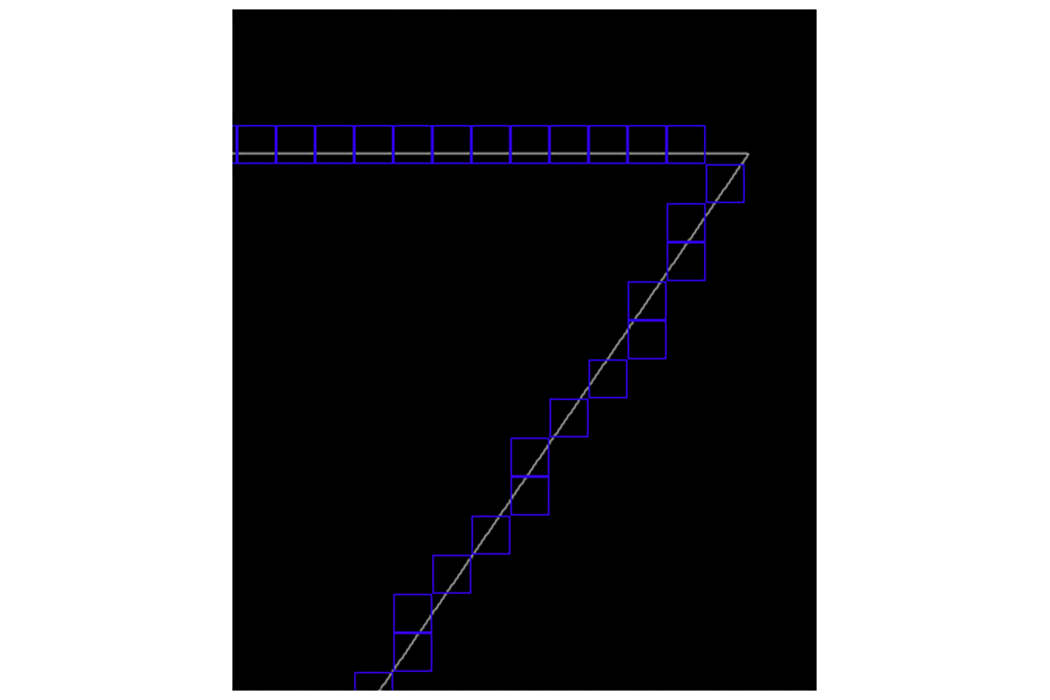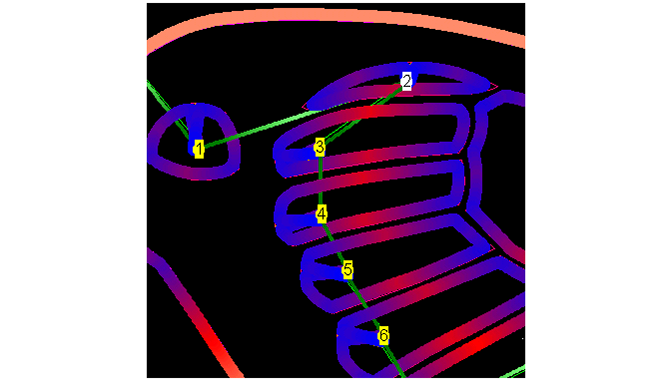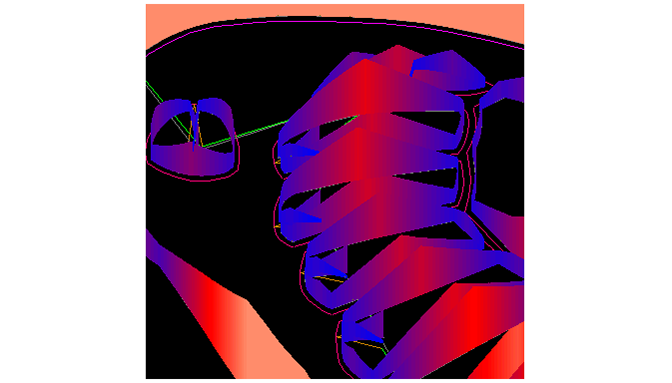![]()
![]()
________________________________________

Review how the part will be made
Use the Preview to Screen command to view how your GlobalMAX machine will make the part. Colors are used to show how quickly the machining head is moving. Using Preview can help in spotting any possible problem spots in the part (such as the machining head moving over an already cut piece, which may tilt up). Choosing any other command, or zooming in or out on the preview will halt Preview.

A sample Preview in progress
Preview is also useful for locating places where the machining head slows down (such as entering a sharp curve). When planning to machine a part many thousands of times, it is worth the effort to optimize the speed of the tool path. For example, changing a right-angle turn to a smooth bend can speed up the tool path in that section.
Preview denotes the following actions:
Blue
Slow area on part (for Qualities 1 to 5).
Red
Fast area on part (for Qualities 1 to 5).
Green
Traverse. Dark green is slower than light green.
Shades of blue
Scribe and water only cutting.
A circle shows the current position of the virtual machining head as MAKE goes through the preview.

A white circle around a "D" indicates a Dynamic pierce.

A purple circle with an "S" indicates a stationary pierce. If MAKE does not have enough room for any other kind of pierce, it will automatically use a stationary pierce.

When you right-click on the Preview to Screen button, the following menu appears.

Right-click on Preview to Screen to see this menu
Many of the Preview options discussed below are intended for use by experienced operators. They are not needed for most operations.
Preview (Default)
This performs the same preview as left-clicking on the Preview to Screen button.
Preview Speed
Adjusts the speed of the preview. This can be useful to carefully examine how the machining head will move a particular area of the part.
When previewing at a slower speed, hold down the SHIFT key to temporarily speed up the preview.
Preview Motor Steps…
This preview displays each motor step (approximately 0.005" [0.13 mm], although this could vary depending on the make and model of your globalMAX). You will need to zoom in at least 5,000% before the boxes that represent each motor step will be visible. This command is primarily useful for troubleshooting difficulties with accurately machining a part.

Each box is one motor step; the line represents the tool path
Show Path Sequence
This preview adds numbers to each "sequence" (section of tool path following a traverse). This can make it easier to see the order in which the various sections of the part are made.

Sample Path Sequence for a part
Show Velocity Profile
This preview shows the preview as a 3-D model with the speed of the machining head shown two ways: as the color and the "height" of the path. The taller the path, the faster the machining head is moving. This additional information can make it easier to locate areas on a part where the machining head slows down.

A sample Velocity Profile (the same area of the part as the Path Sequence image)
Velocity Profile Settings
This menu item brings up another menu with settings for the Velocity Profile preview. The first set of options control the apparent height of the velocity profile display (where the path is shown in 3-D, with the height indicating the speed of the machining head).

The Velocity Profile Settings menu
The Show Newtonian Constraints item will display a gray area showing the fastest the machine can possibly move (given that it can’t go from a stop to 300 inches per second instantly). The difference between the colored velocity profile and the top of the gray area is how much faster the machining head could move through the area. Note that the maximum velocity shown does not take into account the Quality of the cut.
Refresh Display
Click on Refresh Display, and the display is redrawn to return to a normal display after previewing a part. You can also refresh the display by pressing the Tab key.